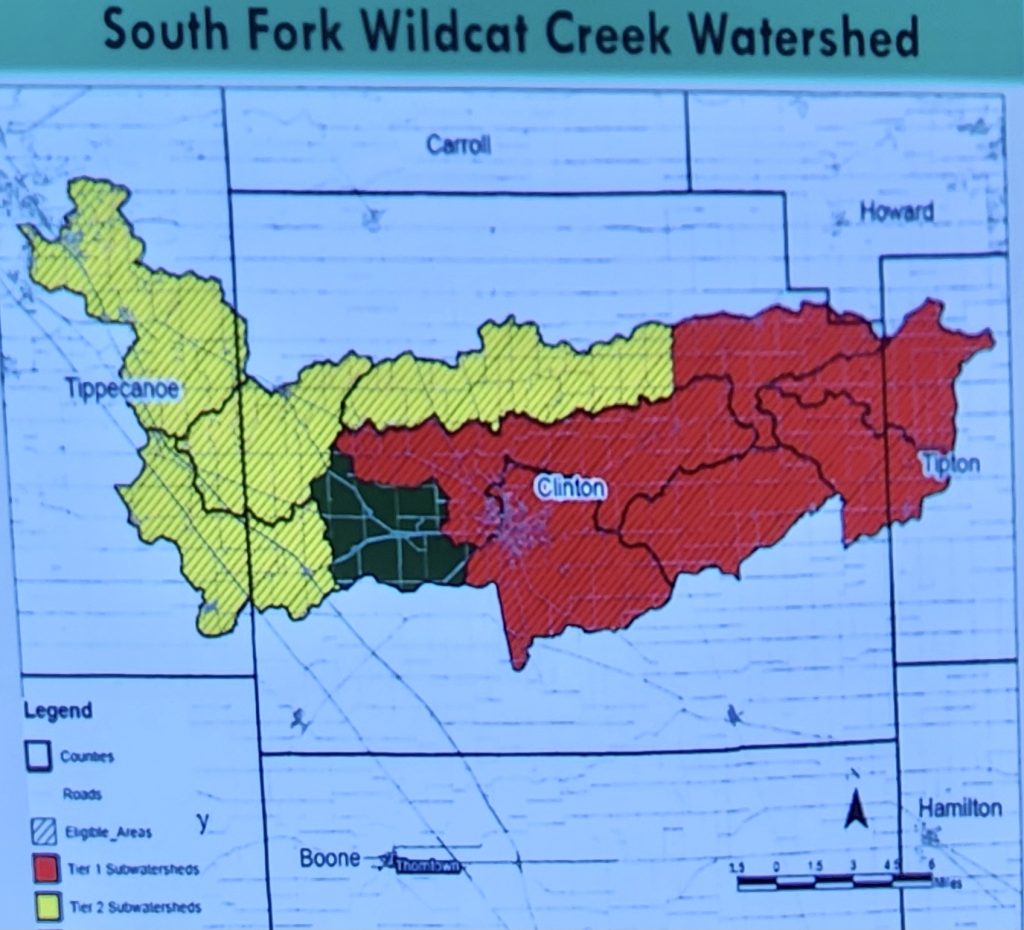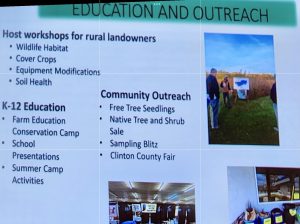The South Fork Wildcat Creek Watershed is getting cleaner.
Thanks to a $220,000 grant approved in 2012 and continuous efforts and funding using a “Section 319” grant from Indiana Department of Environmental Management (IDEM), measurable pollution levels in the Clinton Tipton, Howard and Tippecanoe County watershed are improving.

Clinton County Soil and Water Conservation District representatives Michelle Gilbert and Olivia Petrella visited Frankfort Rotary Club Thursday and outlined the condition of the Southfork (of the Wildcat Creek) Watershed.
Several pollutants can degrade water quality in any watershed. Phosphates, Nitrates and other excess nutrients applied to fields and lawns, E.coli, soil displacement or sediment runoff and industrial waste top the list.
Each year in Indiana, some 20 to 40 applicants compete for 2.6 Million dollars to clean our Indiana waterways. The Southfork Wildcat watershed won such a grant in 2012 and that same grant is still implemented to clean up the Southern Fork of the Wildcat. A one year extension for $80,000 was approved to extend the grant into 2026. These grants often last 9 years and progress is not always quickly seen.
Fortunately, the work since 2012 has improved water quality in the South Fork. Jenkins Ditch north of Michigantown has recently been removed from the Indiana impaired waterway list. Thanks to local, county and state efforts, Jenkins ditch removed significant amounts of sedimentary runoff and E.Coli so the ditch is no longer on the impaired waterway watch list. Efforts like the Jenkins Ditch continue in several locations throughout the watershed. Most projects are funded 75% from Federal and State taxpayer funds (IDEM) and 25% from local farmer/stakeholder funds.
To date, approximately $500,000 has been spent or allocated by IDEM through 2026 for improving the South Fork of the Wildcat. In addition to IDEM funding, approximately $125,000 is matched privately, totaling about $625,000 since 2012 to clean up the waterway.
The main culprits polluting Indiana waterways are:
- Excess Phosphates, Nitrates and other nutrients used to fertilize plants and crops. These chemicals stimulate excess plant growth and reduce oxygen levels in our waterways, reducing fish populations and varieties.
- Sediment runoff that clouds up the stream and inhibits fish and wildlife growth
- E.Coli from livestock leaving the property owner land, entering our streams
- Industrial waste including heavy metals. Southfork watershed has very little industrial waste problems but monitoring for all these stressors is on-going.

For more information about Clinton County Soil and Water Conservation District, the Southfork section 319 grant, invasive species, outreach opportunities or other information, call Michelle Gilbert or Olivia Petrella at 765-659-1223 extension 3.
